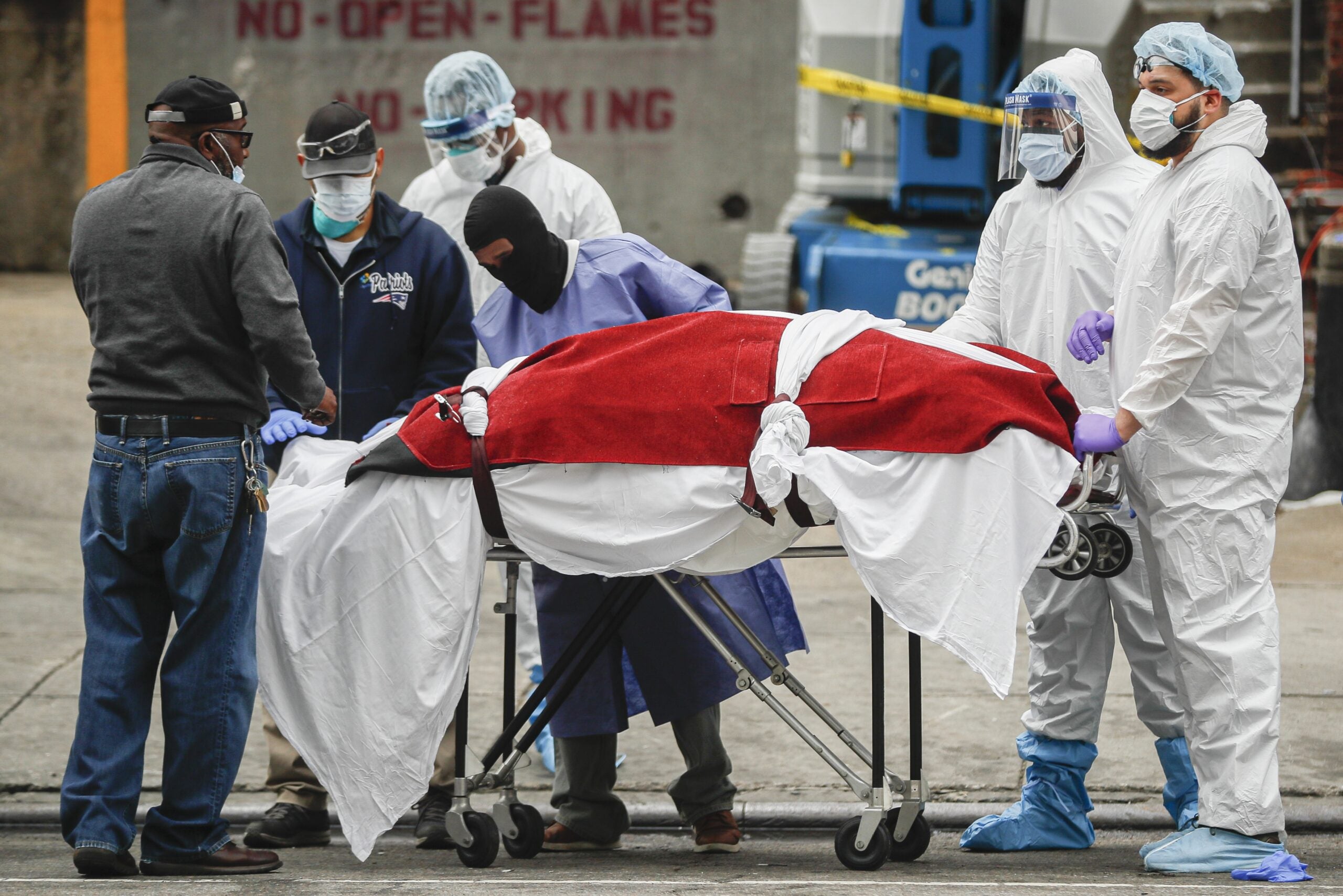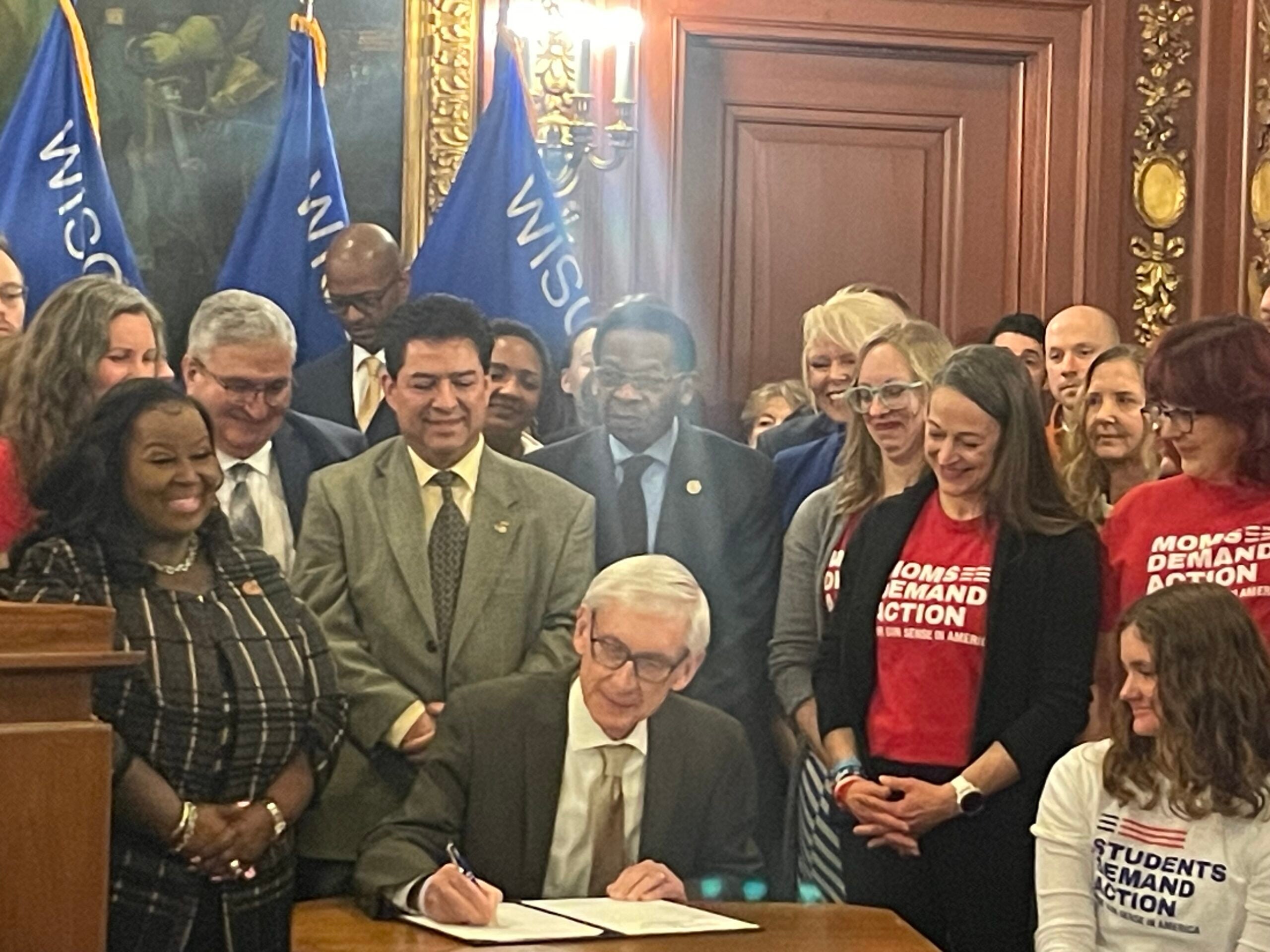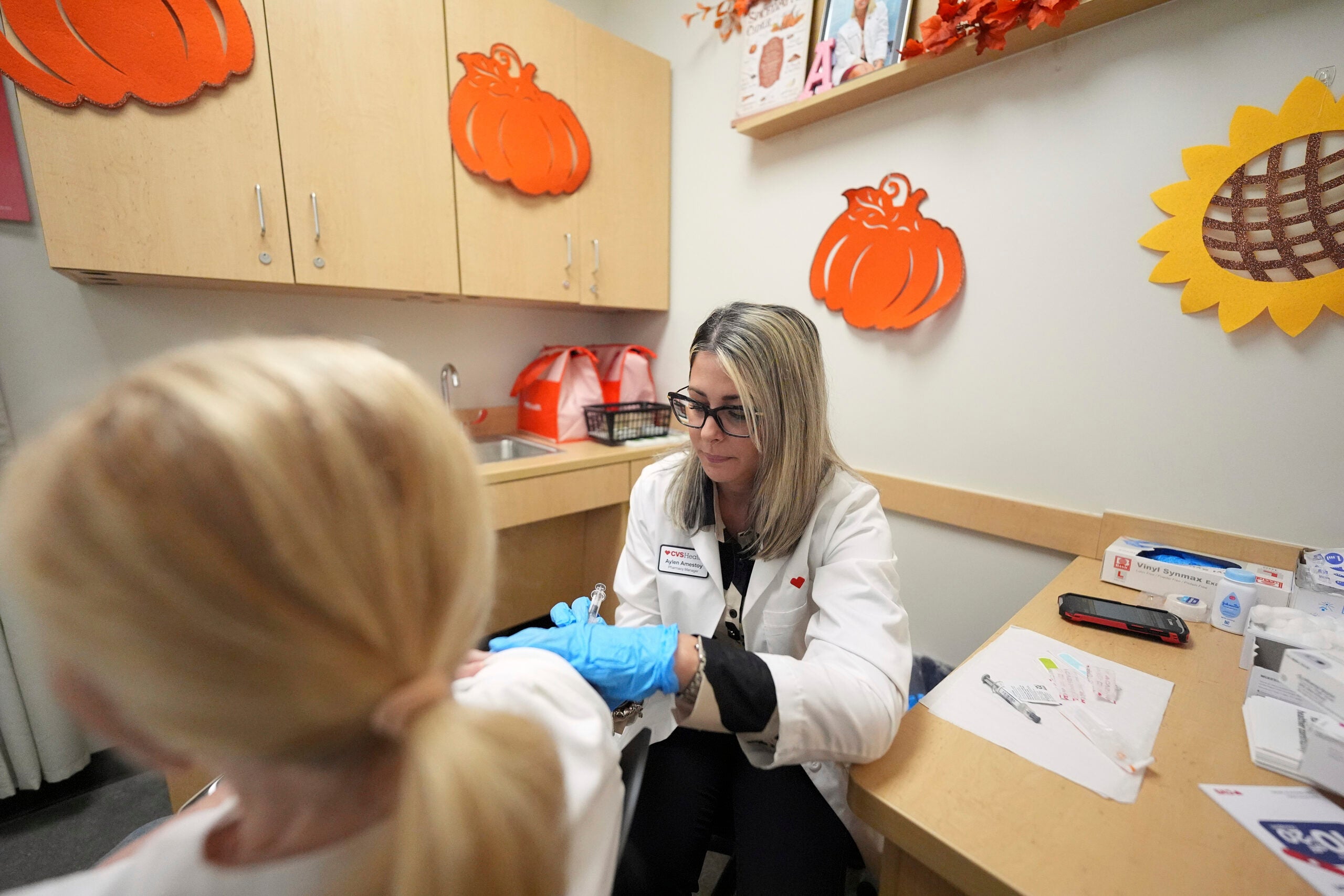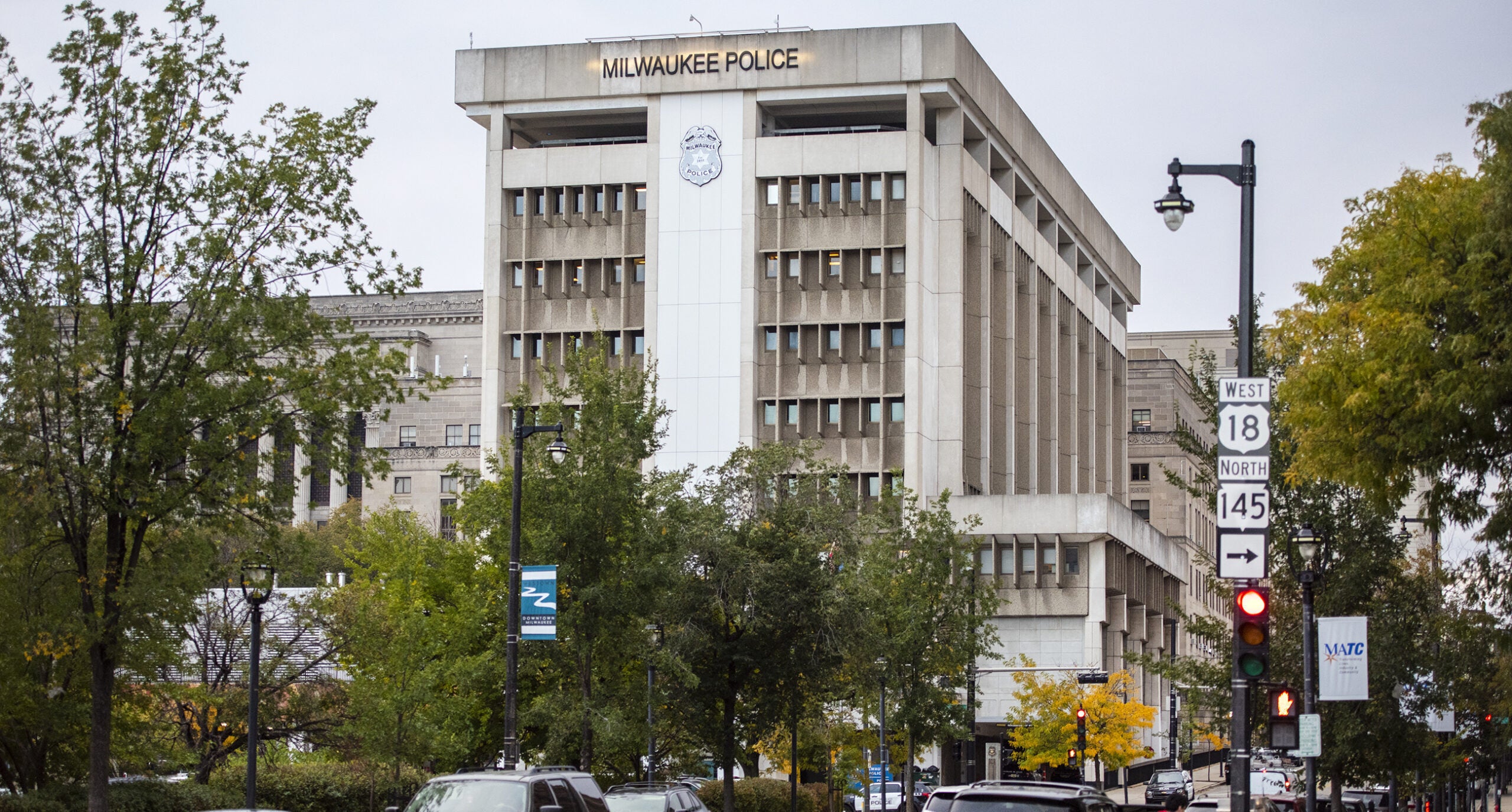COVID-19 was the leading cause of death for law enforcement officers in 2020 and 2021, according to The Janesville Gazette.
Nearly two-thirds of all law enforcement deaths in the United States have been due to complications from COVID-19 in the last two years, according to The Gazette, citing data from the Officer Down Memorial Page, an organization that tracks officer deaths nationwide.
According to Officer Down Memorial Page and the Gazette:
News with a little more humanity
WPR’s “Wisconsin Today” newsletter keeps you connected to the state you love without feeling overwhelmed. No paywall. No agenda. No corporate filter.
- 384 law enforcement deaths in 2020 were reported to the organization, and complications from COVID-19 killed 253.
- 447 law enforcement deaths were reported as of Dec. 9, and complications from COVID-19 killed 295.
The Fraternal Order of Police, which also tracks COVID-19 deaths nationwide, says as of Sunday, 816 officers have died from the virus since the pandemic began.
Here is what some law enforcement leaders in Rock County told The Gazette:
- “It goes without saying that the world is facing the toughest battle many of us have witnessed in our lifetimes,” Beloit Police Chief Andre Sayles said.
- “Behind the numbers are families and children that lose their loved ones while police departments and communities struggle with the deaths. Officers have been trained for years to handle a variety of threats that can result in death or great bodily harm from armed encounters to high speed pursuits or assaults. COVID-19 offers a new and different threat to our officers’ lives,” Janesville Police Chief David Moore said.
- “The virus just became one more threat to the officers who were out in the community doing their jobs,” Rock County Sheriff Troy Knudson said.
Wisconsin DHS: COVID-19 Weekly Recap
The seven-day average for new COVID-19 cases in Wisconsin is 3,558 as of Friday. The Wisconsin Department of Health Services has confirmed 9,600 total deaths from the disease.
57.7 percent of Wisconsinites are fully vaccinated — 82.1 percent of people age 65 and older, 51.2 percent of children age 12 to 15 and 12.1 percent of children 5 to 11 years old.
City of Milwaukee set new record for homicides in 2021
The city of Milwaukee reported the 191st and 192nd homicides earlier this week, once again breaking the city’s record, according to the Milwaukee Journal Sentinel.
Last year, the city set a new record for the number of homicides with a report of 190 killings, which more than doubled 2019 totals. The paper reported that the previous record was set in 1991.
City and county public safety officials have sought to link the surge in homicides to the ongoing pandemic. Milwaukee Police Chief Jeffrey Norman told the paper that the latest numbers are “a continuation of the challenges of 2020 that we’re still working through.”
Norman said the increasing availability of vaccines and the return of many young people to schools might help authorities quell the increase.
Wisconsin counselors help students process traumatic events, both personal and communitywide
The Milwaukee Journal Sentinel explained the counseling services that can be found in many Wisconsin schools to help students deal with tragedies and life events.
While mental health professionals are frequently utilized in schools to help students and staff process major events with widespread community impact, such as the aftermath of the Waukesha Christmas parade tragedy, services are also there to help individuals contend with other traumatic occurrences and to navigate these experiences.
“Grief and mourning can last for years and for children can be experienced in new ways over time as they progress developmentally. We can set up resources to help those students longer term,” said Melannie Litscher, a school psychologist at Milwaukee Public Schools. “Our staff can also identify students who are dealing with trauma, either because they were directly impacted, or have pre-existing mental illness, or the event retriggered past trauma for them.”
The newspaper story answers many questions surrounding the use of these services, such as how they’re deployed, the education or certification requirements and the strategies that utilize to help people contend with grief and other emotions in the wake of misfortune.
State lawmakers introduce bill requiring schools to provide free menstrual products
Two democratic state lawmakers introduced a bill Thursday that would require all school buildings to provide free menstrual products to students.
According to a press release from state Sen. Melissa Agard, D-Madison, and Rep. Sondy Pope, D-Mount Horeb, the bill aims to address gender-based and financial inequality.
“Having them provided at the school will undoubtedly help prevent embarrassing and traumatic incidents. Any opposition to this commonsense proposal is plainly sexist,” Pope said in the release, published by WKOW.
“It is well past time for the conversation of menstrual product accessibility and equality to be brought to the forefront, as those who menstruate here in Wisconsin should not have to continue to face the undue and unjust burdens of inaccessibility to essential products,” Agard said.
Wisconsin’s unemployment rate ties monthly low of 3 percent
Wisconsin’s unemployment rate tied a record low of 3 percent in November, a number last hit exactly three years ago, the Associated Press reports.

The state Department of Workforce Development reported the latest totals Thursday.
Wisconsin’s rate is below the national unemployment rate of 4.2 percent for November. The state rate was down from 3.2 percent in October. Wisconsin gained 12,300 private sector jobs over the month.
Department of Workforce Secretary Amy Pechacek says the numbers demonstrate that Wisconsin’s economic growth depends on having a skilled and ready workforce.
Millions have taken part in the Great Resignation. What’s next?
Unstable working conditions have been exasperated throughout the pandemic, resulting in the “Great Resignation” — more than 4 million people in the U.S. quit their jobs in October alone.
The Washington post highlights some of those people’s experiences with leaving their jobs to see what’s next for them. The Post reports by the end of 2021, there will have been a total of 46 million resignations in the U.S.
There isn’t much data about what’s happened to those who have resigned from their jobs and industries, specifically in restaurant and hotel work, but one analysis from the California Policy Lab at the University of California suggests many of those workers returned to those same sectors or other retail jobs, often at a low wage.
And questions surrounding inflation, wages, tipping, child and health care, benefits, hours, workplace comradery and personal concerns continue to weigh on them.
“There have been several occasions where I’ve looked back and thought I don’t know if I should have quit the coffee shop job, because that money would be really, really great right now,” said Jarrod Ives, who left his serving job at WunderHaus restaurant last year. “There’s a lot of hope, but it’s at a distance, always in the distance.”
Editor’s note: WPR’s Weekend Roundup will be taking a break for two weeks over the holidays. Look out for it on Jan. 8, 2022, and until then visit WPR.org for all your news.
Wisconsin Public Radio, © Copyright 2026, Board of Regents of the University of Wisconsin System and Wisconsin Educational Communications Board.





